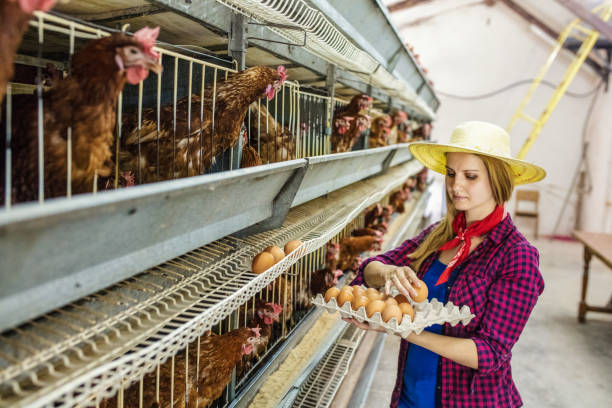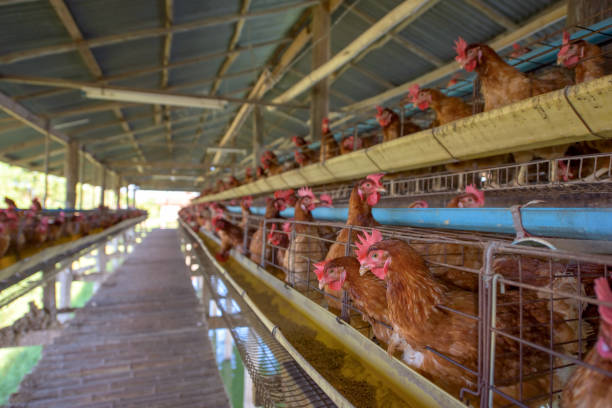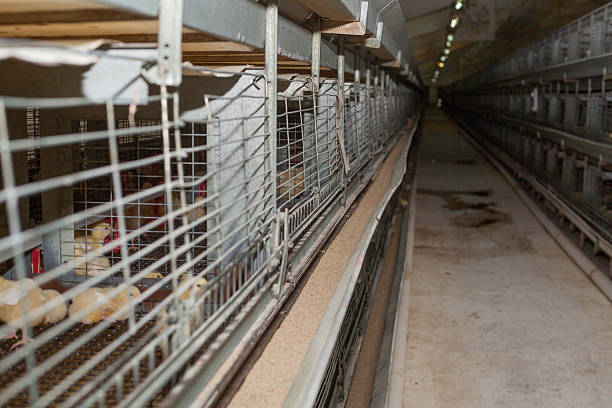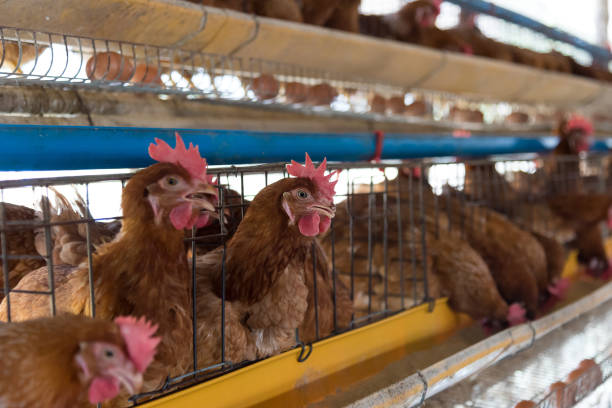Ghana Poultry Farming: How Automatic Cages Can Increase Your Profits
Ghana Poultry Farming: How Automatic Cages Can Increase Your Profits
Poultry farming in Ghana is a growing industry, offering immense opportunities for entrepreneurs looking to tap into the country’s increasing demand for chicken and eggs. However, with traditional farming methods facing challenges like labor costs, disease outbreaks, and inefficient resource management, many farmers are seeking innovative solutions to boost productivity and profitability. Enter automatic poultry cages – a game-changer that can revolutionize your poultry farm in Ghana. Let’s delve into how automatic cages can significantly impact your bottom line.
Understanding the Ghanaian Poultry Landscape
Before diving into the benefits of automatic cages, it’s crucial to understand the current state of poultry farming in Ghana. Poultry provides a significant source of protein for the Ghanaian population. The demand for both chicken meat and eggs is steadily rising, fueled by population growth, urbanization, and changing dietary preferences.
However, local poultry farmers face stiff competition from imported poultry products, which are often cheaper due to economies of scale and subsidies in other countries. To compete effectively, Ghanaian poultry farmers need to improve their efficiency, reduce production costs, and enhance the quality of their products. This is where modern technologies such as automatic poultry cages come into play.
What are Automatic Poultry Cages?
Automatic poultry cages are advanced housing systems designed to automate various aspects of poultry management. Unlike traditional methods where tasks are primarily manual, automatic cages incorporate technology to streamline feeding, watering, waste removal, and egg collection. These systems are typically made of galvanized steel wire and come in different configurations, such as A-frame and H-frame designs, to suit different farming scales and preferences.
How Automatic Cages Increase Profits in Ghana
The primary goal of any business is to maximize profits, and poultry farming is no exception. Automatic cages offer multiple avenues to enhance your profitability:
Reduced Labor Costs
One of the most significant advantages of automatic cages is the reduction in labor requirements. Traditional poultry farms require a substantial workforce to manually feed the chickens, provide water, collect eggs, and clean the poultry house. These labor costs can eat into your profits, especially as minimum wages rise.
Automatic cages automate these tasks, significantly reducing the number of workers needed. For instance, automatic feeding systems ensure that chickens receive the right amount of feed at the right time, eliminating the need for manual feeding. Similarly, automatic watering systems provide a constant supply of fresh water, and automatic egg collection systems gently gather eggs without the need for human intervention. Automatic manure removal systems also minimize manpower.
By reducing your labor costs, you can reinvest those savings into other areas of your business, such as improving feed quality or expanding your farm.
Improved Feed Efficiency
Feed constitutes the largest expense in poultry farming, often accounting for up to 70% of total production costs. Therefore, even small improvements in feed efficiency can have a substantial impact on your profitability.
Automatic cages help improve feed efficiency in several ways. Precise feed distribution ensures that each chicken receives an adequate amount of feed, reducing wastage. The cage design minimizes feed spillage, preventing feed from being scattered on the floor and wasted.
Moreover, the controlled environment within automatic cages reduces stress on the chickens, allowing them to convert feed into meat or eggs more efficiently. Healthier chickens consume feed more effectively, leading to better growth rates and higher egg production.
Increased Egg Production
For egg-laying farms, increasing egg production is crucial for maximizing profits. Automatic cages provide an optimized environment that encourages higher egg yields. The consistent temperature, humidity, and lighting conditions within the cages promote consistent egg-laying patterns.
The design of the cages also plays a role in increasing egg production. The sloping floors allow eggs to roll gently into collection trays, reducing the risk of breakage and contamination. The cages provide a safe and comfortable environment for the hens, minimizing stress and promoting optimal egg production. Daily automated egg collection is also faster and more efficient, reducing the chance of egg loss or damage.
Additionally, the ability to control the chickens’ environment helps reduce stress, which is a major factor affecting chickens’ laying ability.
Reduced Disease Outbreaks

Disease outbreaks can devastate a poultry farm, leading to significant losses in terms of mortality, reduced production, and veterinary expenses. Automatic cages help minimize the risk of disease outbreaks by improving hygiene and biosecurity.
The cage design allows for easy cleaning and disinfection, reducing the buildup of harmful bacteria and pathogens. Automatic waste removal systems ensure that manure is removed regularly, minimizing the risk of ammonia buildup and the spread of disease.
By maintaining a clean and hygienic environment, automatic cages create a healthier living space for the chickens, reducing their susceptibility to diseases. This translates to lower veterinary costs and reduced mortality rates, ultimately boosting your profits.
Better Product Quality
In today’s market, consumers are increasingly demanding high-quality poultry products. Automatic cages can help you produce eggs and chicken meat that meet these standards.
The clean and controlled environment within the cages minimizes the risk of contamination, ensuring that your products are safe and hygienic. The automated egg collection systems reduce the risk of damage, ensuring that your eggs are delivered to market in perfect condition.
By producing high-quality poultry products, you can command premium prices and attract discerning customers, increasing your profitability.
Better Space Utilization
Space is a valuable asset in any farming operation. Automatic cages allow you to maximize the use of available space, increasing the number of chickens you can raise in a given area.
The multi-tiered design of automatic cages allows you to stack cages vertically, effectively multiplying your rearing capacity. This is particularly beneficial for farmers with limited land resources.
By housing more chickens in a smaller area, you can increase your production volume and profitability without incurring additional land costs.
Types of Automatic Poultry Cages
There are several types of automatic poultry cages available in the market, each with its own advantages and disadvantages. Some common types include:
A-Frame Cages: A-frame cages are a popular choice for many poultry farmers. They are relatively simple in design and easy to install. A-frame cages typically have two rows of cages arranged in an “A” shape.
H-Frame Cages: H-frame cages are more sophisticated than A-frame cages and are suitable for larger-scale operations. They have multiple tiers of cages arranged in an “H” shape, maximizing space utilization.
Flat Deck Cages: Flat deck cages are designed for broiler chickens. They provide a flat, comfortable surface for the birds to stand on and are easy to clean.
Factors to Consider When Choosing Automatic Cages
When selecting automatic poultry cages for your farm in Ghana, it’s essential to consider the following factors:
Cage Material: The cage material should be durable, corrosion-resistant, and easy to clean. Galvanized steel wire is a popular choice due to its strength and longevity.
Cage Size: The cage size should be appropriate for the type of poultry you are raising. Broiler chickens require larger cages than laying hens.
Automation Level: Consider the level of automation you need. Some cages offer fully automated feeding, watering, egg collection, and waste removal, while others offer partial automation.
Ventilation: Proper ventilation is crucial for maintaining a healthy environment within the cages. Ensure that the cages are designed to allow for adequate airflow.

Ease of Maintenance: Choose cages that are easy to maintain and repair. This will reduce downtime and maintenance costs.
Cost: The cost of automatic cages can vary depending on the type, size, and level of automation. Compare prices from different suppliers and choose cages that offer the best value for your money.
Implementing Automatic Cages on Your Farm
Transitioning to automatic cages requires careful planning and execution. Here are some steps to follow:
Assess Your Needs: Determine the scale of your operation and the specific needs of your poultry. This will help you choose the right type and size of cages.
Prepare the Poultry House: Ensure that your poultry house is properly insulated, ventilated, and equipped with the necessary infrastructure, such as electricity and water supply.
Install the Cages: Follow the manufacturer’s instructions carefully when installing the cages. Ensure that all components are properly connected and functioning correctly.
Train Your Staff: Provide adequate training to your staff on how to operate and maintain the automatic cages.

Monitor Performance: Regularly monitor the performance of your poultry and the cages. Make any necessary adjustments to optimize production and efficiency.
Challenges and Solutions
While automatic cages offer numerous benefits, they also present some challenges:
Initial Investment: The initial investment in automatic cages can be substantial, especially for small-scale farmers.
Solution: Explore financing options such as loans or grants to help cover the cost of the cages. Also, consider starting with a smaller-scale installation and gradually expanding as your business grows.
Technical Issues: Automatic systems are prone to technical issues such as equipment malfunctions or power outages.
Solution: Invest in high-quality equipment from reputable suppliers and establish a maintenance schedule to prevent breakdowns. Have a backup power supply in case of power outages. Also, ensure your staff is trained to troubleshoot basic technical issues.
Resistance to Change: Some farmers may be resistant to adopting new technologies.
Solution: Educate farmers about the benefits of automatic cages through workshops, seminars, and demonstration farms. Highlight the potential for increased profits and improved efficiency.
The Future of Poultry Farming in Ghana
Automatic cages represent a significant step forward in the modernization of poultry farming in Ghana. By embracing this technology, Ghanaian poultry farmers can improve their competitiveness, increase their profitability, and contribute to the country’s food security. As the demand for poultry products continues to rise, automatic cages will play an increasingly important role in meeting this demand efficiently and sustainably. With continued investment in technology, training, and infrastructure, the future of poultry farming in Ghana is bright.





